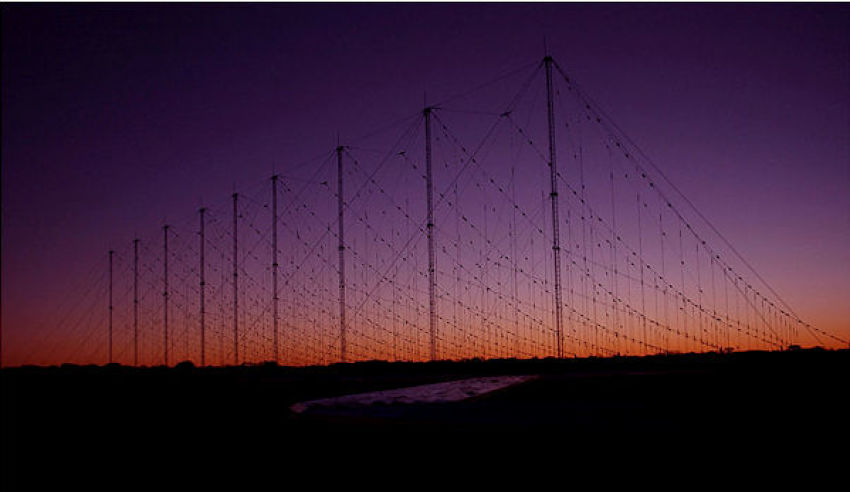With the Capability Acquisition and Sustainment Group (CASG) expected to announce the outcome of the competitive tender process for the Jindalee Operational Radar Network (JORN) upgrade Project Air 2025 Phase 6 shortly, BAE Systems Australia has reaffirmed the depth of its proposed solution.
To continue reading the rest of this article, please log in.
Create free account to get unlimited news articles and more!
JORN is a world-class over-the-horizon radar (OTHR) that delivers visibility over Australia’s northern approaches, with a pedigree dating back to the 1970s when DSTO (now DST Group) started researching the technology.
The state-of-the-art system provides wide area surveillance at ranges of 1,000 to 3,000 kilometres and plays a vital role in supporting the Australian Defence Force’s air and maritime operations, border protection, disaster relief and search and rescue operations.
Supported by a control centre at RAAF Base Edinburgh in South Australia, the radars are located in three remote Australian locations including Laverton (Western Australia), Alice Springs (Northern Territory) and Longreach (Queensland),
The pending upgrade, called Project Air 2025 Phase 6, will support the operational life of JORN beyond 2042, with work to commence in 2018.
The project will improve the performance of JORN and involves the replacement of most of the radar and frequency management system hardware, information and communication technology hardware, the upgrade of software architecture and processing, as well as other specialised optional enhancements.
Both BAE Systems Australia and Lockheed Martin are in competition to secure the lucrative contract, worth an expected $1 billion over the period of the development and sustainment of the network.
Both companies have put forward competitive bids for the contract, with the government positioned to deliver its decision in March, after which the selected tenderer will go through a period of contract negotiation.
CASG will favour the tenderer that can deliver total cost of ownership benefits, backed by innovation and a focus on continuous improvement.
Lockheed Martin and BAE Systems Australia are already engaged on JORN contracts, with BAE Systems Australia responsible for maintenance and sustainment of the Alice Springs location. Lockheed Martin services the Longreach and Laverton locations, with the co-ordination centre at RAAF Edinburgh being shared between BAE systems and Lockheed Martin.
The contract is hotly contested with both organisations delivering strong solutions as lead contractors complemented with input from other defence primes and SMEs.
BAE Systems Australia has proposed an all-Australian open-architecture solution for JORN that will enable new capabilities and technologies to be more readily inserted and integrated.
It will be backed by data distribution service (DDS) architecture, which will offer longevity and scalability through allowing technology or applications to be plugged into JORN from external sources, such as an SME, without having to modify or overhaul the whole platform.
The solution leans on "unparalleled systems integration and expertise", according to the company’s CEO Glynn Phillips.
He noted that its partners in delivering the company’s proposed JORN solution "not only ensure that the Commonwealth is supported by leaders in our individual fields, but to deliver a program where local knowledge, local expertise and local talent will contribute to the evolution of JORN – ensuring sovereign control of the technology, and building a foundation for future defence projects".
The BAE Systems Australia solution is supported by Raytheon Australia, a leading combat systems integrator with a track record in delivering complex integrated work, including the Air Warfare Destroyers (AWD).
It also draws on the capabilities of Daronmont Technologies, an SME with capabilities in HF sensor and high technology electronics, plus RCR Infrastructure, which has extensive experience providing facilities management in remote sites – areas where JORN is located.
Speaking with Defence Connect, BAE Systems Australia JORN campaign lead Steve Wynd said the proposed solution for Project Air 2025 Phase 6 is underpinned by Australian innovation and capability.
"We've got a system that pulls together a lot of proven innovation that really draws on our capability, our total capability in Australia, and supporting top-end performance-based contract and complex platforms," Wynd said.
"Using our technical knowledge of HF radar that we've continually proven in the export market, we’ve produced a totally integrated system that will drive down cost of ownership [of JORN] and give it the performance it needs."
The BAE Systems Australia Joint Open Innovation Network (JOIN), which aims to support domestic companies to integrate with JORN – and other company initiatives – will be a key driver of this, Wynd said.
He said this flexibility will allow businesses to plug into the network, prove the feasibility of a concept or solution and then present it to Defence.
Wynd also stressed that having an Australian workforce with expertise in this area is crucial to their system.
"It's about constant improvement, it's about capability and it's about having the capability when you need it. You’ve got to have HF expertise, and you've got to have the workforce here in Australia to do it," he said.

 Login
Login







